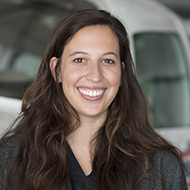What next?
Staying sharp after the checkride

This can be a jarring and intimidating transition that might end up drastically influencing the amount you fly, but with some planning, it doesn’t have to. And now, with the reins in your hands, you can make every flight a fun flight, which in the end, might mean you end up flying even more.
We pilots tend to be goal-oriented, successful folks, and now with the biggest goal—your checkride—a thing of the past, it can be hard to know what next steps to take. The FAA’s milestones might be only memories, but here are a few you can still reach for to keep you flying.
Take your first passengers
Start with somewhere you’ve been before and with just one passenger. It might be tempting to start out with a $100 hamburger, but unless your passenger has some other general aviation travel under their belt, it is a better idea to begin with a short flight so that if your guest gets air sick you can quickly return to the field. A trip to the practice area and back can make a great first flight. Taking a single passenger will be mostly a familiar feeling—you’ve done most of your flying with someone sitting next to you, and you might actually find it more comfortable to fly with a passenger than to fly solo. Don’t forget the preflight briefing and give your passenger plenty of time to get used to the seat belt and doors.
Go somewhere new
Do you want to fly the same flight over and over again or do you want some real adventure? Hopefully at some point in your training your CFI sent you somewhere totally new. If yours did, you already know the sense of accomplishment you get from flying to a new place solo. And if you didn’t, it is a great, confidence-building skill to learn. Get a recommendation from your fellow pilots for a tasty breakfast or lunch spot and go check it out. Or throw a dart at a chart and go from there. Your choice.






Take your first overnight trip
This one is a huge milestone. Your first overnight trip! Multi-day journeys will require more preflight planning and you’ll have to keep a closer eye on the weather, but the payoff will be high—you’ll be using GA in a fun, new, rewarding way, and you may never want to take a road trip again.
Leave the airport with your next flight scheduled
If you had a good CFI (or if you are a good CFI), you already know this—leaving with your next flight scheduled and something to look forward to increases the chances that you’ll fly sooner rather than later. You know how your dentist doesn’t let you leave until you schedule your next cleaning? This is like that, but fun.
Fly with a CFI once a year (at least)
CFIs are a vastly underutilized resource. And flying with a CFI doesn’t mean you’re a bad, rusty, or incompetent pilot—it means you want to continue learning. Grow your skills by flying with a CFI on a gusty crosswind day, increase your comfort with new-to-you airspace, or get checked out in a different aircraft type.
If you start to feel rusty, you can tell your CFI and plan some refresher flights. And if you ever find yourself in a prolonged lapse in flying, don’t worry—a CFI will be happy to get you back up to standards and flying again.
Fly solo
When you’re alone in the air, just you and the airplane, you’re hyper aware of your aviating abilities, the high stakes of flying, and the privilege of flight. The best pilots find time to fly solo and work on improving their stick and rudder and decision-making skills—put yourself in that camp and fly solo as well. If you ever get to a point where you would fly with a passenger but not fly solo (a misguided reality that’s more common than you might think), you need to get back in the air with a CFI and build some confidence.
You worked hard to earn the freedom to fly so don’t let it go to waste. Go fly!

 Your first flight review
Your first flight review

